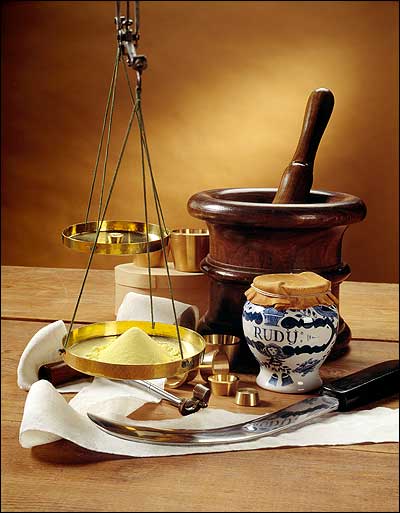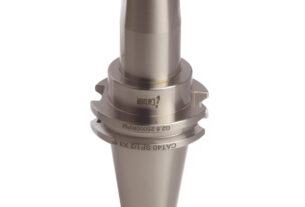As we delve into the world of medicine and healthcare, we are often introduced to the term “apothecary.” An apothecary is a person who prepares and sells medicines. In the past, an apothecary would use various tools to create remedies for different ailments.
In this article, we will explore the history of apothecaries and their tools. From mortar and pestle to modern-day technologies, we will take a deep dive into the world of apothecary tools.
What Are Apothecary Tools?
Apothecary tools refer to the various instruments that were used by apothecaries in the past to prepare medicines. These tools ranged from simple ones like scales and measuring cups to complex equipment like stills and furnaces.
Apothecaries would use their knowledge of herbs, plants, and other natural substances to create remedies for different illnesses. They would grind or crush these substances using tools like mortar and pestle before mixing them together.
These tools were not only important for preparing medicines but also for ensuring their efficacy. The precise measurement of ingredients was crucial in creating effective remedies.
The History of Apothecary Tools
The use of apothecary tools can be traced back to ancient times. The Egyptians were known for using various herbs and natural substances in their medical practices. They would grind these substances into a fine powder using mortars and pestles before administering them to patients.
In ancient Greece, Hippocrates, the father of medicine, believed that the body had its own healing powers. He prescribed natural remedies made from herbs and plants to help support the body’s natural healing process.
As time passed, apothecaries became more widespread in Europe during the Middle Ages. They would sell various remedies ranging from simple ointments to complex potions made from exotic ingredients.
During the Renaissance, apothecaries became more professionalized. They were required to undergo training and apprenticeships before being allowed to practice their craft. They would use various tools like stills and furnaces to create more complex remedies.
In modern times, apothecary tools have become more advanced, with the invention of new technologies and equipment. However, the principles behind their use remain the same – to create effective remedies that support the body’s natural healing process.
Types of Apothecary Tools
1. Mortar and Pestle
One of the most iconic apothecary tools is the mortar and pestle. This tool consists of a bowl (the mortar) and a grinding instrument (the pestle). It was used to grind or crush herbs, spices, and other substances into fine powders.
The mortar and pestle were essential in creating medicines because they allowed for precise measurements of ingredients. They also helped release essential oils and flavors from herbs, which enhanced their medicinal properties.
2. Scales
Scales were another important tool used by apothecaries. They were used to measure ingredients before mixing them together. The accuracy of scales was crucial in creating effective remedies.
Apothecaries would use several types of scales depending on their needs. The most common type was the balance scale, which consisted of two pans suspended on either side of a beam.
3. Still
Stills were used to extract essential oils from plants and herbs. They consisted of a container (the pot) where the plant material was placed, a condenser (a coiled tube), and an outlet where the distilled liquid would come out.
Still technology has evolved over time, with modern-day stills using electricity or gas as a heat source instead of firewood.
4. Furnace
A furnace was used to heat materials like metals or minerals to high temperatures. Apothecaries used furnaces to create mineral-based remedies like salts and tinctures.
The furnace was a complex instrument that required skill and expertise to use safely. The heat generated by the furnace could be intense, so apothecaries had to be careful when working with it.
5. Glassware
Glassware was used in apothecary practices for various purposes. It was used to store liquids, mix ingredients, and measure substances. The most common types of glassware used were beakers, flasks, and graduated cylinders.
Glassware was preferred because it did not react with the substances being stored or mixed. This ensured that the purity and efficacy of the remedies were maintained.
Conclusion
Apothecary tools played a vital role in the development of medicine throughout history. They allowed for precise measurements of ingredients and helped create effective remedies that supported the body’s natural healing process.
While modern-day medicine has evolved significantly, the principles behind apothecary practices remain relevant today. Many people still prefer natural remedies made from herbs and plants over synthetic medicines.
If you’re interested in learning more about apothecary tools, there are many resources available online and in books. By studying these tools’ history and uses, we can gain a better understanding of how medicine has evolved over time.
References:
1. “History of Pharmacy.” History of Pharmacy | American Pharmacists Association, www.pharmacist.com/history-pharmacy.
2. “A Brief History of Apothecary Shops.” I Love Old School Medicine, 16 Sept. 2019, iloveoldschoolmedicine.com/a-brief-history-of-apothecary-shops/.
3. “Apothecary Tools.” Museum of Health Care at Kingston, 24 May 2017, museumofhealthcare.wordpress.com/2017/05/24/apothecary-tools/.
4. “Apothecaries’ Weight.” Encyclopædia Britannica, Encyclopædia Britannica, Inc., www.britannica.com/topic/apothecaries-weight.
5. “Apothecary.” Wikipedia, Wikimedia Foundation, 12 Oct. 2021, en.wikipedia.org/wiki/Apothecary.




